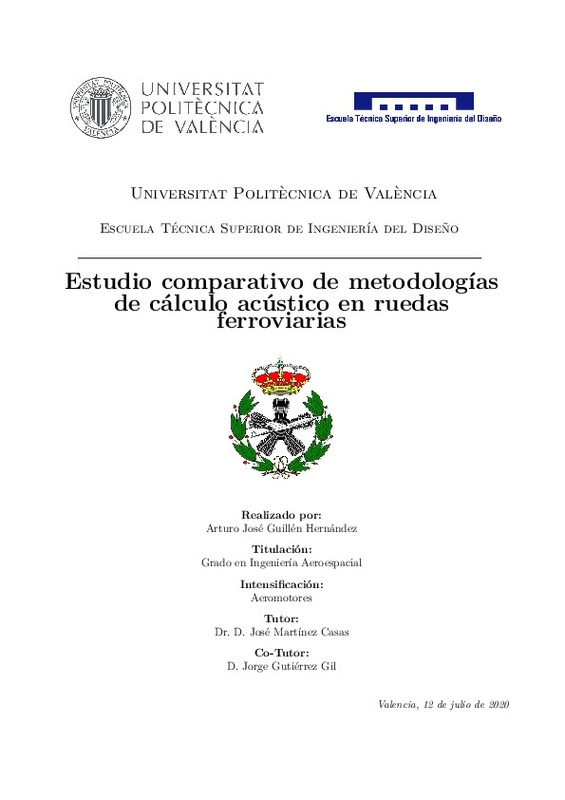|
Resumen:
|
[ES] La contaminación acústica generada por vehículos ferroviarios afecta negativamente a la salud de las personas y es un factor limitante para la expansión de este medio de transporte. La rueda, por sus particulares ...[+]
[ES] La contaminación acústica generada por vehículos ferroviarios afecta negativamente a la salud de las personas y es un factor limitante para la expansión de este medio de transporte. La rueda, por sus particulares propiedades modales e interacción dinámica con el carril, destaca por ser uno de los elementos más contribuyentes dentro de la radiación acústica global emitida por el sistema tren-carril, siendo el ruido de rodadura (rolling noise) el tipo de emisión más importante en la mayor parte de condiciones de funcionamiento del vehículo.
De cara a evaluar posibles mejoras, tanto en el diseño de la rueda, como en el resto de los elementos del tren o carril, es imprescindible contar con una metodología de cálculo acústico numérico precisa. Además, es interesante que el proceso de simulación sea computacionalmente sencillo de cara a su factibilidad en un proceso iterativo de optimización de componentes, donde se realizan numerosos cálculos acústicos correspondientes a diferentes diseños.
La resolución del problema de interacción fluido-estructura (FSI) se considera uno de los métodos de cálculo acústico más precisos, sin embargo, su alto coste computacional lo hace inviable como evaluador dentro de un proceso iterativo, donde generalmente se opta por metodologías simplificadas que evitan la resolución del problema acoplado mediante aproximaciones matemáticas. En este trabajo se presenta un estudio comparativo de estos dos enfoques, explorando y justificando las diferencias en los resultados obtenidos teniendo en cuenta los distintos modelos de cálculo, y valorando la idoneidad de cada uno de ellos dado un objetivo práctico. El estudio se llevará a cabo en distintas geometrías de ruedas ferroviarias, incluyendo ruedas optimizadas para una menor radiación acústica.
[-]
[EN] The noise pollution generated by rail vehicles negatively affects people's health and it is a limiting factor for the expansion of this means of transport. The wheel, because of its particular modal properties and ...[+]
[EN] The noise pollution generated by rail vehicles negatively affects people's health and it is a limiting factor for the expansion of this means of transport. The wheel, because of its particular modal properties and dynamic interaction with the rail, stands out for being one of the most contributing elements within the global acoustic radiation emitted by the train. The rolling noise is the most important type of emission in most vehicle operating conditions.
In order to evaluate possible improvements, both in the design of the wheel and in the rest of the elements of the train, it is essential to have a precise numerical acoustic calculation methodology. Furthermore, it is interesting that the simulation process is computationally simple in view of its feasibility in an iterative component optimization process, where numerous acoustic calculations corresponding to different designs are performed.
Solving the fluid-structure interaction problem (FSI) is considered to be one of the most accurate acoustic calculation methods. However, its high computational cost makes it unfeasible as an evaluator in an iterative process, where generally simplified methodologies are chosen to avoid solving the coupled problem using mathematical approaches. This project resents a comparative study of these two approaches, exploring and justifying the differences
in the results obtained taking into account the different calculation models, and evaluating the suitability of each one given a specific practical objective. The study will be carried out taking into account different rail wheel geometries, including optimized wheels for less acoustic radiation.
[-]
|







